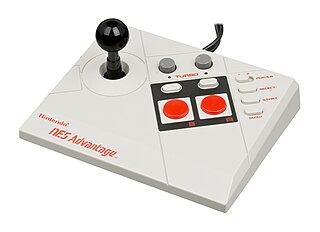
The NES Advantage is an arcade style controller manufactured by Asciiware and released by Nintendo for the Nintendo Entertainment System in 1987. The device is meant to rest on a flat surface at a comfortable level, such as a tabletop or the floor, with the player seated behind it. This way, it can be used like an arcade game joystick—with the left hand using the joystick and the right hand operating the buttons.

The Zapper is an electronic light gun accessory launched within the Nintendo Entertainment System (NES) in North America on October 18, 1985. It is a cosmetic redesign by Nintendo of America's head designer Lance Barr, based on Gunpei Yokoi's Video Shooting Series light gun (光線銃シリーズガン), which had been released in Japan for the Famicom on February 18, 1984. The Zapper requires compatible NES games, such as Duck Hunt, Wild Gunman, and Hogan's Alley. Its internal optical sensor allows the player to aim at a television set and accurately shoot at in-game targets.

River City Ransom, known as Street Gangs in PAL regions, is an open world beat 'em up video game originally for the Nintendo Entertainment System. It is an English localization of Downtown Nekketsu Monogatari for the Famicom. The game was developed by Technōs Japan and released in Japan on April 25, 1989.

Technōs Japan Corp. was a Japanese video game developer, best known for the Double Dragon and Kunio-kun franchises as well as Karate Champ, The Combatribes and Voltage Fighter Gowcaizer. As of June 2015, Arc System Works owns the intellectual properties of Technōs Japan.

The Super Game Boy is a peripheral that allows Game Boy cartridges to be played on a Super Nintendo Entertainment System console. Released in June 1994, it retailed for US$59.99 in the United States and £49.99 in the United Kingdom. In South Korea, it is called the Super Mini Comboy and was distributed by Hyundai Electronics. A revised model, the Super Game Boy 2, was released in Japan in January 1998.

The NES Satellite is a multiplayer adaptor (multitap) accessory for the Nintendo Entertainment System designed by Rare Coin-It and produced by Nintendo. It was released in North America in December 1989 at an MSRP of US$39.95; it was also featured in the NES Sports Set console bundle, which retailed for $150. The adapter was released in Sweden in February 1991 for 525 kr.
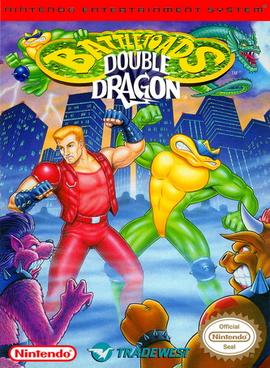
Battletoads/Double Dragon is a 1993 beat 'em up developed by Rare and published by Tradewest. It was originally released for the Nintendo Entertainment System and later ported to the Mega Drive/Genesis, Super NES, and Game Boy. The SNES version was released on Nintendo Switch Online in September 2024; it was the game's first re-release as it was not released on the Rare Replay collection.

Super Dodge Ball is a dodgeball-based sports game produced by Technos Japan Corp. originally released as an arcade game in 1987. In Japan, it was the second game starring Technos Japan's video game character Kunio-kun, following Nekketsu Kōha Kunio-kun, although the connection between the two games was removed in the western release. Various home versions and sequels of the game have been released for various platforms.
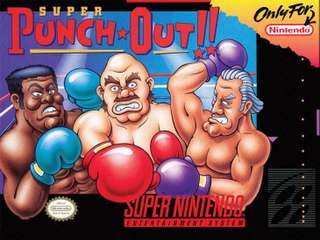
Super Punch-Out!! is a boxing video game developed and published by Nintendo for the Super Nintendo Entertainment System (SNES). It was released on October 24, 1994 in North America and again in the same region in 1996. It was released in the United Kingdom on February 10, 1995 for the same console and in Japan in 1998 for the Super Famicom through the Nintendo Power flash RAM cartridge series. The game is also included in the GameCube version of Fight Night Round 2 as an extra game due to the inclusion of Little Mac in the game. The game was released for the Wii's Virtual Console in Europe on March 20, 2009, in North America on March 30, 2009, and in Japan on July 7, 2009. The game was also released on the New Nintendo 3DS eShop on May 5, 2016. Nintendo re-released Super Punch-Out!! in the United States in September 2017 as part of the company's Super NES Classic Edition. It is the fourth game in the Punch-Out!! series, taking place after the Punch-Out!! game for the Nintendo Entertainment System (NES).
A multitap is a video game console peripheral that increases the number of controller ports available to the player, allowing additional controllers to be plugged in simultaneously in a manner similar to a power strip or a USB hub. A multitap often takes the form of a box with three or more controller ports which is then connected to a controller port on the console itself.

Nintendo World Cup is a soccer video game for the Family Computer/NES and Game Boy, developed by Technōs Japan and released in 1990. It is a localization of Nekketsu High School Dodgeball Club: Soccer, the fourth Kunio-kun game released for the Family Computer. Ports for the PC Engine and Mega Drive were also released in Japan. A Game Boy version was released in Japan, North America, and Europe.

Super Bomberman is an action, maze game, part of the Bomberman series, released for the Super NES in 1993. It is the first in the series to be released in Europe keeping the Bomberman title instead of being called Dynablaster or Eric and the Floaters.

Bomberman Blast is an action game developed and published by Hudson Soft for the Wii and WiiWare as part of the Bomberman franchise. The game was released as two versions: a fully featured retail release and a WiiWare version known as Wi-Fi 8-Nin Battle Bomberman. The retail version was released in Japan on September 25, 2008, while the WiiWare version was released on September 30, 2008. The WiiWare version was released in Europe on September 12, 2008, and in North America on September 29, 2008.

The Nintendo Entertainment System (NES) is an 8-bit home video game console produced by Nintendo. It was first released in Japan on July 15, 1983, as the Family Computer (Famicom). It was released in US test markets as the redesigned NES in October 1985, and fully launched in the US the following year. The NES was distributed in Europe, Australia, and parts of Asia throughout the 1980s under various names. As a third-generation console, it mainly competed with Sega's Master System.
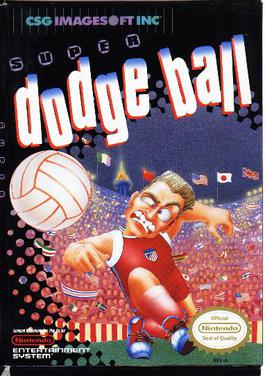
Super Dodge Ball is a sports video game developed and published by Technōs Japan that was for the Nintendo Entertainment System in 1989. It is loosely based on the 1987 arcade game of the same name, which was also developed by Technōs. Like its arcade counterpart, it was released in Japan as part of the Kunio-kun series.
The Turbo File devices from ASCII Corporation are external storage devices for saved game data on various Nintendo consoles. They have been sold only in Japan, and are mainly supported by ASCII's own games. The first one was designed primarily to allow players transfer data between the Wizardry games released on the Famicom.
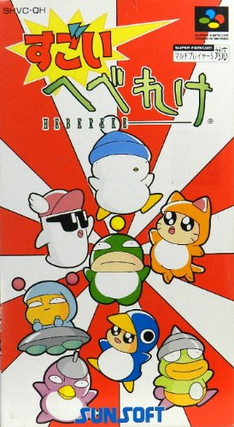
Sugoi Hebereke is a 1994 fighting game developed and published by Sunsoft in Japan for the Super Famicom on March 11, 1994. It is a spin-off of the Hebereke series, as well as Sunsoft's first attempt in the genre before they became better known for the 1995 Galaxy Fight: Universal Warriors, the 1996 Waku Waku 7, and the 1998 Astra Superstars.

Nekketsu Fighting Legend is a 1992 tournament-style fighting game developed and published by Technōs Japan exclusively in Japan for the Family Computer on December 23, 1992. It is a spin-off of the Kunio-kun series, as well as Technōs Japan's first attempt in the genre since their port of their Double Dragon arcade game on the same platform. Technōs Japan later became better known for its Neo Geo titles, such as Double Dragon fighting game and Voltage Fighter Gowcaizer.

The PlayStation Multitap is a peripheral for the PlayStation. It is an adapter that can be used to plug in up to four controllers and memory cards at the same time in a single controller port. With a second multitap, up to eight controllers and memory cards can be plugged at once.















